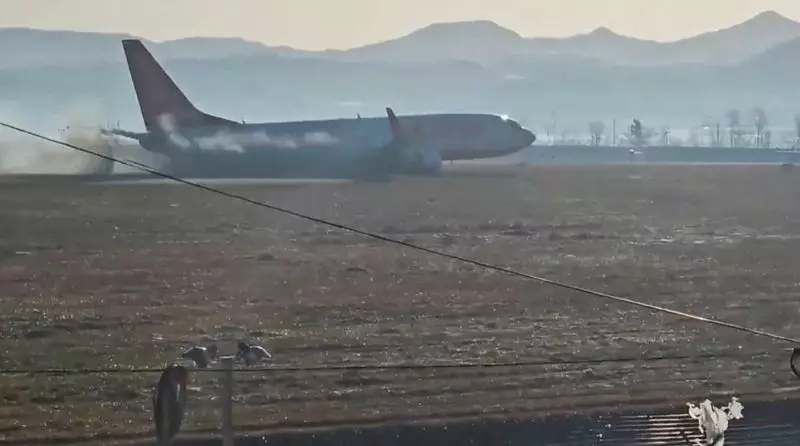The recent crash of Jeju Air Flight 7C2216 at Muan International Airport has plunged South Korea into a wave of uncertainty and grief. Killing 179 out of 181 passengers and crew onboard, the disaster raises numerous questions about aviation safety protocols, the sequence of events leading to the incident, and the mechanics of the aircraft involved. While authorities initially pointed to a potential bird strike as a contributing factor, experts argue that more investigation is needed to understand the complexities of this tragic event.
One of the most perplexing aspects of the crash was the belly landing of the Boeing 737-800, a type commonly praised for its reliability and safety. Video footage conveyed an alarming scene: the aircraft skidding on the runway without its landing gear deployed, followed by a catastrophic collision with an airport wall that resulted in flames and scattered debris. This raises crucial questions about the circumstances leading to this maneuver, particularly concerning how the plane was operated during its final moments. Experts highlight that in the unlikely event of an emergency landing, pilots are trained to deploy alternative systems to lower the landing gear, making its absence even more puzzling.
Potential Causes Under Scrutiny
The investigation into Flight 7C2216 will be intricate. Aviation specialists have cast doubt on the likelihood of a bird strike causing the lack of landing gear, citing independent systems designed to ensure the gear deploys even in adverse scenarios. Secondary concerns also emerge around the aircraft’s speed upon approach, as footage suggests that critical braking mechanisms were not activated. The absence of responses to established protocols raises questions regarding the crew’s actions during a pivotal moment.
Additionally, the report of a mayday declaration just before landing indicates escalating distress, yet the crew’s decision to switch landing directions compromised their operational efficiency. Such alterations in plan typically result in increased cognitive workload, and whether this last-minute change played a role in the crash necessitates further scrutiny.
When analyzing the myriad variables that contribute to aviation accidents, aviation experts emphasize the role of systemic failures. Factors such as crew training, environmental conditions, and aircraft maintenance cannot be overlooked. The captain of the ill-fated flight was experienced, having logged over 6,800 flight hours, while the first officer had approximately 1,650 hours. Nonetheless, even seasoned pilots can confront unpredictable variables that could catalyze tragic outcomes.
Reports also indicate that external conditions, such as weather or visibility, could have compounded the dangers. While Deputy Transport Minister Joo Jong-wan asserted that the runway length and structural features met industry standards, the impact of sudden changes in a busy airport environment cannot be disregarded, especially when combined with unknown mechanical malfunctions.
The Role of Investigation and Future Prevention
As South Korea assumes the lead in the investigation, collaborating with the U.S. National Transportation Safety Board, experts stress that this tragedy underscores the urgency of understanding the accident’s multi-faceted nature. Aviation accidents often involve a complex interplay of technical glitches, human error, and procedural oversights. The flight data and cockpit voice recorders have been recovered, and analysis of this data will be pivotal in piecing together the moments leading to the crash.
Trevor Jensen, an Australian aviation consultant, mentions that fire and emergency responders are typically prepared for belly landings, which suggests that contingency measures might not have been adequately engaged or that the event unfolded too rapidly for effective response. Geoffrey Dell, another safety expert, notes that while bird strikes are common, a single incident rarely leads to the total loss of an aircraft, implying that there may have been a convergence of problems that exacerbated the circumstances.
The Jeju Air Flight 7C2216 tragedy serves as a poignant reminder of the inherent risks associated with aviation, while shining a light on the necessity for continued evolution in safety protocols and crisis management strategies. Every air disaster is a call to action, urging the aviation industry to analyze and rectify vulnerabilities in their systems. As investigators sift through the wreckage both literally and figuratively, the hope is that future measures will prevent such calamities from occurring again, ensuring that flying remains the safe mode of transportation it is intended to be.

